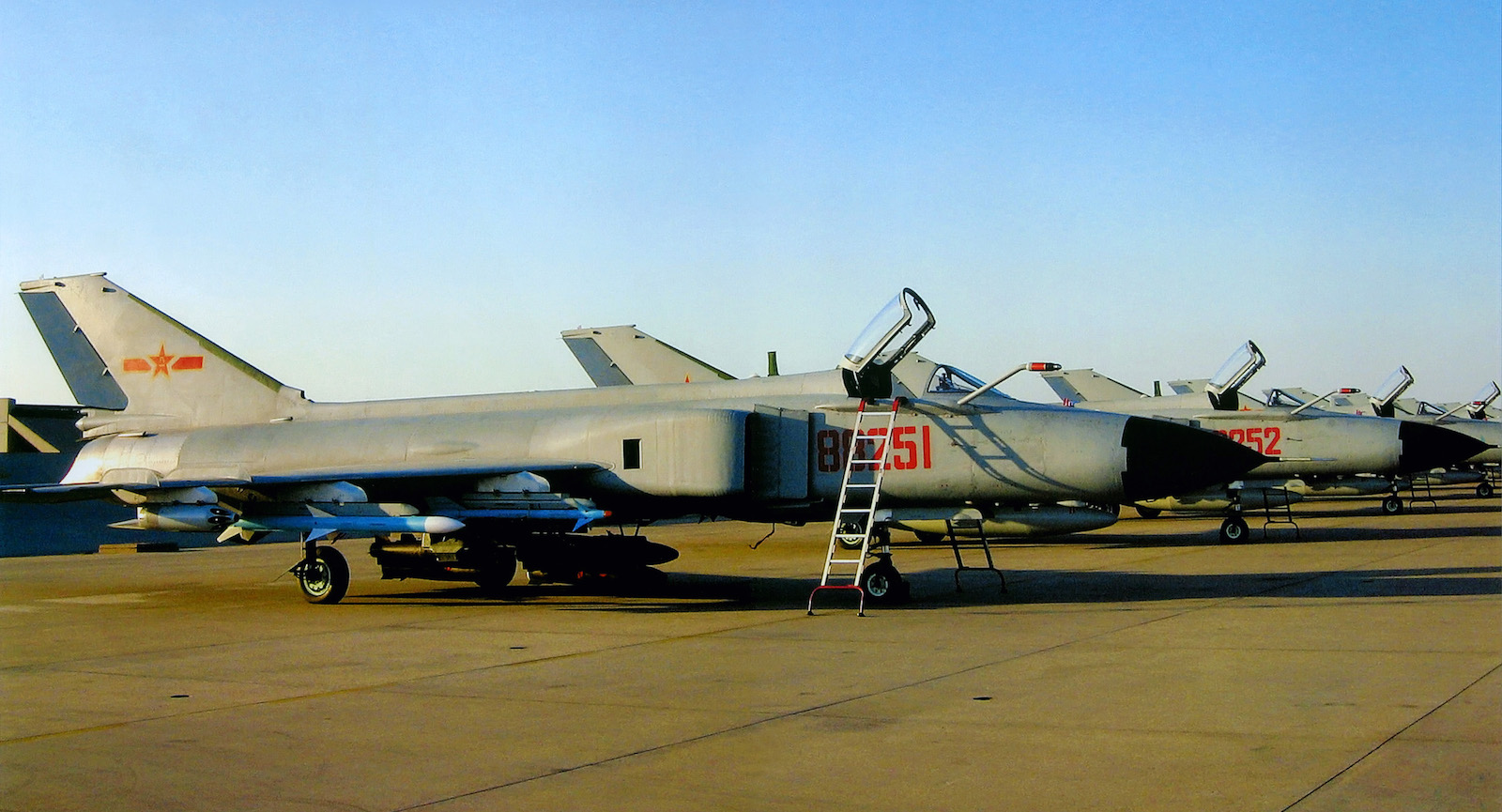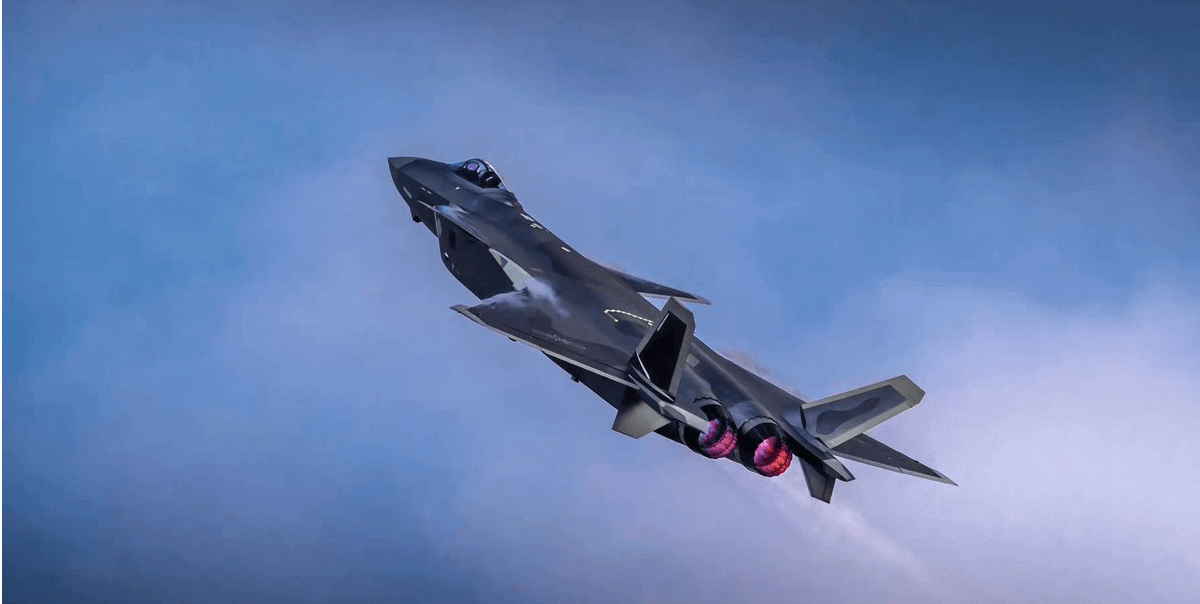In 1979, the United States (US) finally granted full diplomatic recognition to China, setting grounds for a brief period of US-China defense cooperation. China began purchasing weapons from US firms, with official State Department approval.
Beijing saw an opportunity in this to take advantage of the US’s technological expertise for its third generation J-8 fighter program that had begun in the early 1960s but was hampered by domestic turmoil and lack of technical know-how, jeopardizing the operational needs of the PLA Air Force (PLAAF).
In the late 1950s, the Western countries started developing their next-generation, nuclear-armed, deep-penetration strategic bombers and reconnaissance aircraft with capabilities far exceeding the most advanced fighters the PLAAF had.
Therefore, the Chinese military needed a new high-performance interceptor fighter that could fly at a maximum speed of Mach 2.2, reach a service ceiling of over 20,000 meters, achieve a sea-level climb rate of 200 m/s, and reach a combat radius of 750 to 1,000 km.
In 1964, the Shenyang Aircraft Design Institute (601 Institute) proposed a scaled-up, twin-engine turbojet-powered version of the J-7 – the Chinese copy of the Soviet-designed MiG-21 Fishbed – which was eventually given a go-ahead by the PLA in 1965.

The prototype production began in 1966 and the first maiden flight took place in 1969 but the flight testing of the aircraft did not complete before December 1979 because of the interruptions caused by the ‘Cultural Revolution’.
The J-8 was finally certified for design finalization in December 1979 and entered service with the PLAAF in 1981. Although the aircraft somewhat achieved the original design targets for performance, it had no distinctive advantage over the earlier J-7 because of the lack of capable avionics and armaments.
Meanwhile, the 601 Institute had begun to develop an improved variant known as J-8I in 1976 which made its first flight in 1982. The flight testing was completed in 1985 and it was approved for design finalization.
However, even the J-81 could not meet the PLAAF’s requirements and the PLAAF also demanded the ‘beyond-visual-range’ (BVR) air combat capability using the radar-homing MRAAMs, and ground attack as a secondary capability. So, Shenyang then began developing a radically improved variant of the aircraft, J-8II in the early 1980s.
The J-8II featured side-mounted engine intakes instead of J-8I’s MiG-21-style nose intake allowing for a large radar to be fitted in the forward fuselage. Reports also suggest that its design benefitted from access to the Soviet-made MiG-23 Flogger which China acquired illegally from Egypt in the early 1970s.

It was first flown in June 1984 and still failed to satisfy the needs of the PLAAF as it was limited by poor sensors, electronic warfare systems, avionics and a low payload capacity of just 4 air-to-air missiles.
Its weapons systems were also far behind their American and Soviet counterparts such as the AIM-7 and R-40. So, Beijing finally decided to seek help from the US for its J-8 program and in 1986, President Ronal Reagan approved the ‘Peace Pearl’ Sino-US cooperation project to help China modernize its J-8II fighter, with the aim of jointly countering the threat of the Soviet Union.
In 1987, the US Air Force’s Aeronautical Systems Division placed a contract with Grumman (now Northrop Grumman) reportedly worth $502 million for avionics upgrades to about 50-55 J-8IIs. The package included the Westinghouse AN/APG-66 radar found on early F-16s, US-made inertial navigation systems, head-up displays (HUD), multi-function cockpit displays, computers, and ejection seats.
Two J-8IIs were transported to the US in early 1989 accompanied by around 40 Chinese military officers for flight tests to be undertaken by US pilots. Prototype installations were planned for two J-8lls either at Edwards Air Force Base, or the Mojave Air and Space Port in California in 1989.
While the US was going to supply the avionics, weapons were to be provided by the Italian defense industry. A batch of Alenia Aspide BVR missiles – based on the AIM-7E Sparrow with semi-active radar homing – was delivered to China in the mid-1980s, where the design was further developed for surface-launched and air-launched purposes.
There exists at least one photo of the J-8IIs in an anechoic chamber in the US which are used for integrating new radars and other electronic equipment on an aircraft. These chambers deaden ambient electromagnetic radiation and ensure that the various emissions don’t interact negatively with other systems onboard.
However, this historic US-China cooperation was short-lived as the project was canceled because of the arms embargo imposed by the US on China following the 1989 Tiananmen Square incident.

Eventually, China had to turn to Russia and Israel for help in the development of advanced avionics suites and around 60 J-8IIs were produced between 1992 and 95.
Reports suggest that the Type 1471 pulse-Doppler radar on J-8II was based on the Israeli Elta EL/M-2034, and aircraft were equipped with new PL-12 air to air missiles with high precision, a 100 km range and speeds of Mach 4 placing them on par with the most advanced Russian and American armaments of the time.
There was also an export-optimized F-8IIM offered with the Russian Phazotron Zhuk radar and Russian armament. The J-8 interceptor was China’s full attempt at a modern indigenous jet for air-to-air combat.
The final and most advanced Finback fighter variant was the J-8F that first flew in 2000. Currently, a handful of PLAAF units and a single PLA Navy regiment still use late-model J-8s.
Today, after more than 50 years since the first J-8 flew in 1969, China’s military aviation industry has made significant strides such as becoming the only third country to operate a fifth-gen stealth jet, apart from US and Russia.
- Written by Tanmay Kadam/EurAsian Times Desk
- Contact the author at etdesk@eurasiantimes.com
- Follow EurAsian Times on Google News




